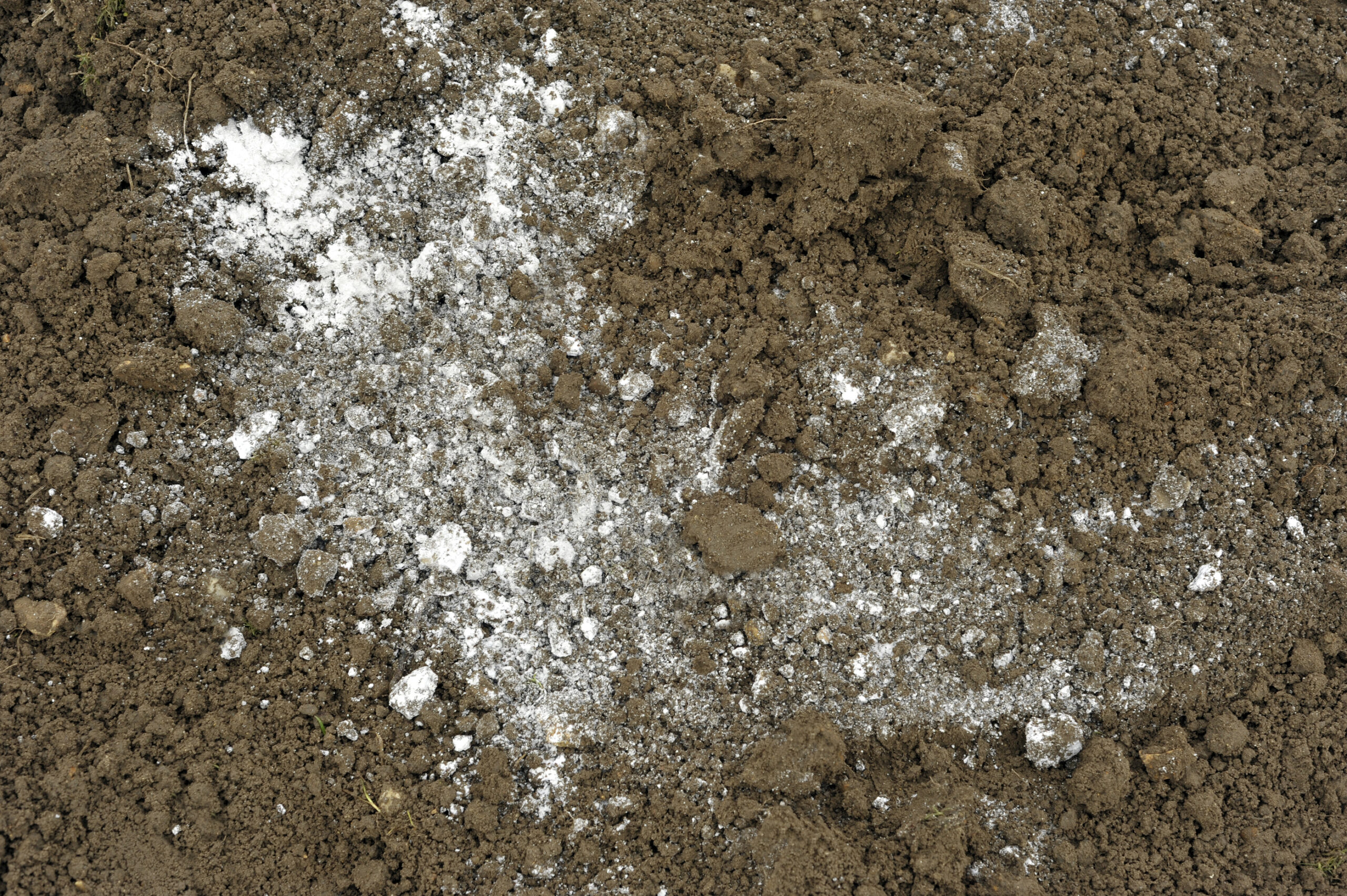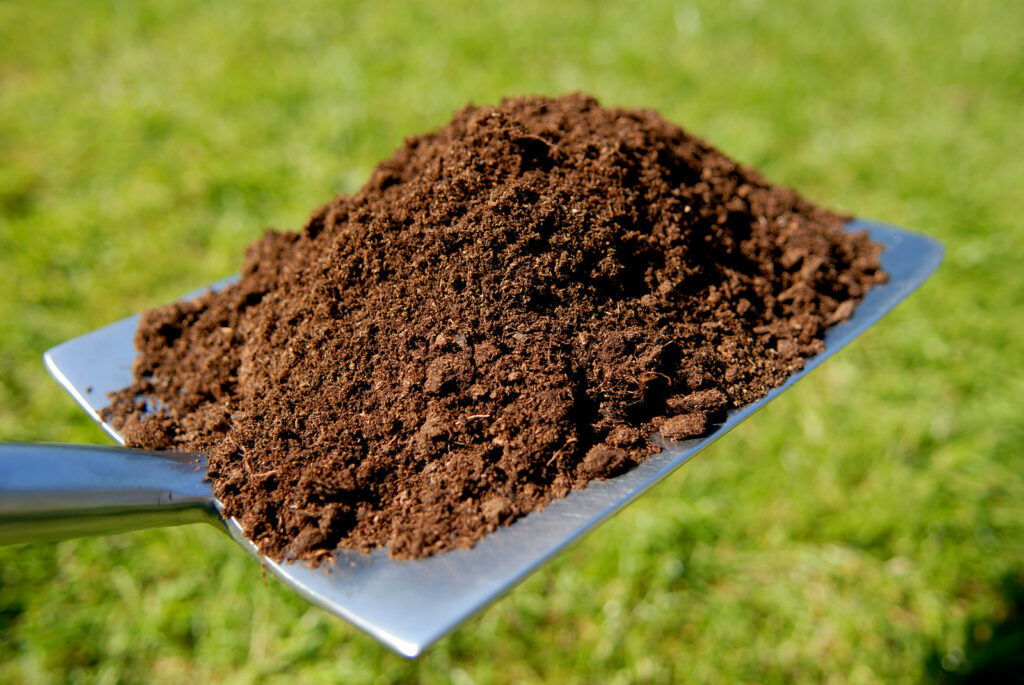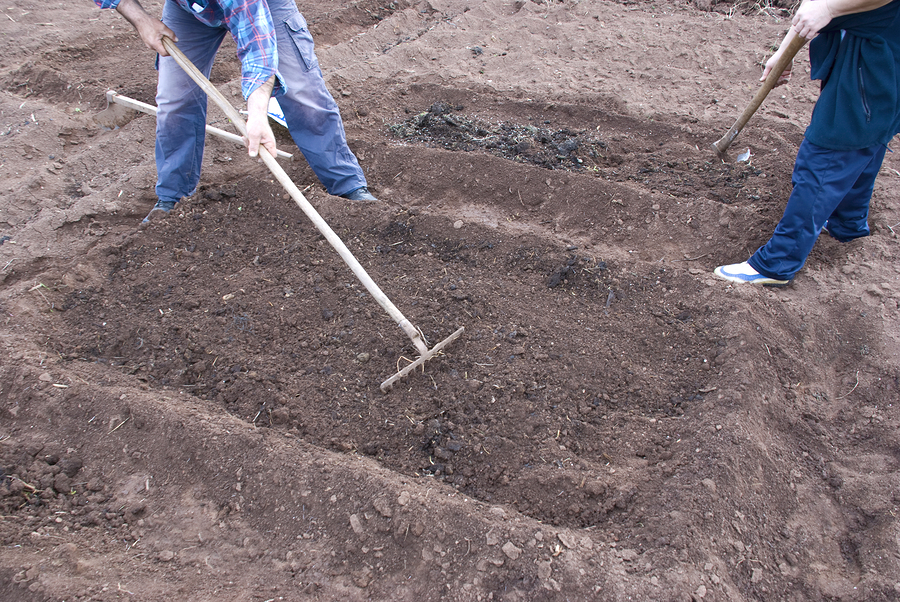How to Improve Garden Soil
Taking care of the soil in your garden is your number one garden chore. Healthy garden soil supports plant roots and growth. The moisture and nutrients your plants need are in the soil.
The time you devote to your garden’s soil will pay for less time spent watering, fertilizing, and fighting pests and diseases. That’s how important garden soil is. Vigorous plant growth, flowering, and fruiting are all related to the health of the soil.
Adding organic matter
Adding organic matter—aged compost, well-rotted manure, grass clipping, chopped leaves—is the best (and least expensive) way to improve the soil and keep it healthy. Decomposed organic matter (both plant and animal) is called humus. Humus along with minerals derived from rock contains all of the nutrients plants need. Humus also binds soil particles which in turn hold soil moisture near plant roots. Soil moisture absorbed by roots carries nutrients up into the plant.
Humus is made by the natural decomposition of organic matter; that decomposition is aided by earthworms and soil microorganisms. Feeding the soil organic matter feeds earthworms and soil microorganisms which in turn assist organic matter decomposition creating humus feeding plants and keeping them healthy.

Check soil texture
Loam is the name given to soil that contains mineral particles of various sizes, organic matter and humus, and enough air for healthy root growth; loam drains well but doesn’t dry out; it retains moisture for plant roots.
Sandy soil is made up of large mineral particles; it has large pore spaces between particles that allow water and nutrients to drain away. Plants don’t grow well in sandy soil; they need water and nutrients more often than plants growing in loam.
Clay soil is made up of tiny mineral particles that pack together. Clay soil can hold a lot of nutrients in soluble form, but the soil is sticky when wet and hard when dry. Clay soil is either slow to drain or dry and hard; it is difficult for plant roots to grow in clay soil.
Clearly, the best soil for plants is loam. How do you know which soil you have in your garden? Do this simple test of soil texture:
- Wet a patch of soil and let it dry out for a day.
- Pick up a handful of soil and squeeze it firmly in your fist.
- Open your hand.
- If the soil is predominately clay, the soil will form a tight ball that feels slippery. If the soil is sandy, the ball will feel gritty, and it won’t hold its shape If the soil is loam, the ball will slightly crumble but keep its shape.
If your soil is clay or sandy, add organic matter.
Check soil drainage
Garden soil must be well-drained. Too much water in the soil and plant roots will not be able to breathe and function. Loam soil holds moisture and is well-drained at the same time. Sandy soil is porous and lets water and nutrients pass through. Clay soil holds too much water or goes dry and becomes hard in hot weather.
Here’s how to check soil drainage:
- Dig a 2-foot-deep (60cm) hole and fill it with water. Let it drain.
- Fill the hole with water a second time.
- If the water drains away in a few hours after the hole has been filled a second time, drainage is good. If water remains in the hole after 12 hours, drainage is poor.
Improve drainage by adding organic matter to the soil. Turn aged compost or other organic matter into the soil to 18 inches (45cm) deep or more.
If drainage remains poor, check for hardpan—that is a layer of hard soil beneath the surface. Hardpan can be broken up with a pick-ax.
When hardpan can not be removed or when the soil is constantly wet or boggy, you can either install a sub-surface drainage system—usually tiles, or you can grow plants in raised beds filled with good soil.

Adjust soil pH
Soil pH is a measure of the acidity or alkalinity of your garden soil. When the chemical balance of the soil is too acidic or too alkaline, minerals and nutrients in the soil can become locked or bound and unable to reach soil roots and help nourish plants. The acidity or alkalinity of soil may affect which fertilizers or other soil amendments the garden may need.
Soil pH ranges from acid through neutral to alkaline. Soil with a pH of 7 is neutral. Soil with a pH below 7 is acidic. Soil with a pH greater than 7 is alkaline. Plants grow best between 5.5 and 8; pH numbers beyond that range are problematic for plant growth.
- Acid soil is found where rainfall is heavy, and the soil is high in organic matter. Most plants thrive in mildly acid soil.
- Alkaline soil is found where rainfall is light, the soil is high in calcium carbonate. Many plants can grow in moderately alkaline soil.
- Salty soil is found near the seashore and in arid regions; salty soil pulls water from plant roots making it difficult for plants to take up moisture and nutrients.
If the plants in your garden are not growing well, test the soil pH. Soil too acidic or too alkaline can “tie-up” nutrients. You can test the soil pH with a simple test kit that you can get at a garden center (you can also have the test done at a laboratory.
When you have soil pH test results you can adjust the pH if necessary. If the soil is too acidic, you can raise the pH by adding calcium carbonate (lime). If the soil is too alkaline you can lower the soil pH by adding sulfur—or by adding aged compost over time.
Adjusting the soil pH can take time—months. Soil pH changes from readily in sandy soil than in clay soil. The amount of lime or sulfur you add to the soil will vary; it is important to follow the instructions on the labels of soil amendments.
Nutrients and plant growth
Natural nutrients contained in organic matter, minerals, and rock help plants grow. The five most important plant nutrients are nitrogen, phosphorus, potassium, calcium, and magnesium. Plants also need a range of micronutrients such as boron, iron, and zinc.
Here’s what the most important plant nutrients do:
- Nitrogen aids green leafy growth and development.
- Phosphorus and calcium aid root growth and flower and fruit development.
- Potassium aids root development and disease resistance.
- Magnesium aids photosynthesis.
Enriching the soil with organic matter will provide the nutrients plants need to grow. A soil test will include recommendations for applying amendments, fertilizers, or other additives to the soil. Some commercial lab test results will recommend specific quantities of amendments.
Common fertilizers, both organic and synthetic, contain plant nutrients. Fertilizers labels commonly list the ratio of nitrogen (N), phosphorus (P), and potassium (K) in the package; an NPK of 10-10-10 indicates the package contents contain 10 percent nitrogen, 10 percent phosphorus, and 10 percent potassium; also listed on the label will be trace or micronutrients such as calcium and magnesium. The contents of a package that are not nutrients are non-fertilizer materials to help carry or deliver the nutrients.

Adding amendments
Soil amendments can help improve the soil. Organic soil amendments can improve soil texture, improve drainage, adjust the soil pH, and slowly provide nutrients to plant roots. Organic soil amendments are made of natural plant or animal materials or of powdered minerals or rock.
Adding organic amendments to the soil mimics nature’s process of feeding the soil. Here are easy steps to amend the soil:
- Dampen the soil thoroughly and allow it to dry; don’t work with soil that is too wet or too dry.
- Turn the soil to a depth of about 10 to 12 inches/25-30cm (the length of a spade or shovel blade); break up dirt clods, remove stones and debris; use a spading fork and rake to work the soil into a fine tilth, fine granules.
- Add fertilizer or amendment; spread the additive over the soil; follow label directions.
- Mix the amendment into the soil evenly with a spading fork or steel rake.
- Level the bed with a rake; break up any remaining clods of earth.
- Water the soil thoroughly and let it sit for a few days before planting.
Most organic soil amendments are slow-acting; they take time to break down in the soil. The best time to add soil amendments is in early spring when the soil becomes workable and before planting. The second best time to amend the soil is in the fall after harvest and after cleaning the garden of plant debris.
Soil amendments
- Blood Meal: Made of dried animal blood. It is a high source of nitrogen with an NPK of 11-0-0. Sprinkle lightly on the soil surface and gently turn it under; follow package directions.
- Bonemeal: Made of finely ground, steamed animal bones. It is a source of phosphorus with an NPK of 1-11-0. Sprinkle into planting hoes or on the soil surface and gently turn it under.
- Compost: Decayed organic matter; rich in plant nutrients. Improves soil fertility, breaks up clay, improves soil’s ability to hold water; encourages beneficial earthworms and microbes. Work into planting beds; use as mulch around plants.
- Garden Sulfur: Lowers soil pH; used to make neutral or alkaline soils more acidic when planting acid-loving plants. Test soil pH before using. Follow package directions.
- Gypsum: Breaks up clay soil when spread over the soil and worked into the soil; takes about 6 months to a year to work; liquid form faster acting than powder form; do not apply if pH is below 5.8; follow package directions.
- Lime: Made of ground limestone. Raises the soil pH; used to make acidic soils more alkaline; processed lime takes effect in a few weeks; dolomitic limestone takes a few months. Do not overapply
- Manure: Composted, aged, or well-rotted manure improves soil fertility (though the concentration of nutrients is low), breaks up clay, and improves the soil’s ability to hold water. Work into the top two inches of soil. Do not use fresh manure; it can burn plant roots. Chicken manure is high in nitrogen and should be applied several months ahead of planting.
- Perlite: Made of tiny, heat-popped volcanic rock. Helps keep the soil loose and improves the soil’s ability to hold moisture; use in clay or sandy soil. Use in containers; expensive to spread in the garden. Lightweight and can float to the top when soil is watered.
- Sand: Use to break up clay soils; use sharp or builder’s sand–beach sand contains salt and playground sand is too fine. Work to a depth of 18 to 24 inches; experiment with a small area before using a lot.
- Soil Conditioner and Planting Mix: Loose terms for materials that improve soil texture and fertility, often a form of humus or aged compost, may include bark. Work into the top 18 inches of soil as you would aged compost or manure.
- Sphagnum Peat Moss: Organic matter harvested from bogs and then dried. Holds moisture, improves soil texture, and can slightly lower soil pH. Difficult to rewet if allowed to dry; considered a non-renewable resource.
Soil troubleshooting
| Problem | Solutions |
| Heavy soil/clay. Soil is difficult to work wet or dry. Water puddles on soil; plants do not thrive. | Add 4 to 6 inches (10-15cm) of aged compost across the planting bed, and work it to a depth of 18 to 24 inches (45-60cm). Add aged compost to planting holes; add gypsum to the soil. If the soil is not workable plant in mounded soil or a raised bed. Add more aged compost to the soil twice a year. |
| Sandy soil. Soil is loose wet or dry. Water drains through the soil quickly making plants difficult to water. | Add 4 to 6 inches (10-15cm) of aged compost across the planting bed, and work it to a depth of 18 to 24 inches (45-60cm). Add peat moss to the soil. If the soil is not workable plant in mounded soil or a raised bed adding topsoil and aged compost. Add more aged compost to the soil twice a year. |
| Poor soil. Most plants fail to thrive. | Add 4 to 6 inches (10-15cm) of aged compost across the planting bed, and work it to a depth of 18 to 24 inches (45-60cm). Add chopped leaves or peat moss to the soil. Add more aged compost to the soil twice a year. |
| Wet soil. Soil stays wet in low-lying areas. Soil smells boggy or rancid. Plant leaves turn yellow. | Add aged compost and sharp sand to the soil to help it be better drained. Plant in a raised bed or container above the wet soil. Grow moisture-loving plants. Drainage tiles can be installed below the soil surface. |
| Hardpan. Soil is hard and unworkable a few inches or more below the surface. | Use a pickax or steel bar to break up the hardpan. Create a raised above unworkable soil or plant in containers. |
| Rocky soil. Rocks and stones are large and small in soil. | Remove the rocks to 18 or 24 inches (45-60cm) deep. Create a raised bed above the rocks. Create a rock garden. |
| Tree roots in the soil. Tree roots near the surface make soil difficult to dig. | Plant between roots. Cut out small roots less than 1 inch (2.5cm) in diameter to create planting holes; removing roots can harm trees. Mound soil above roots but not more than 2 inches (5cm) or tree roots will suffer from soil compaction. |
Also of interest:

